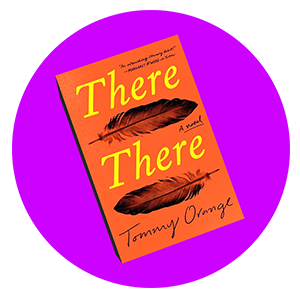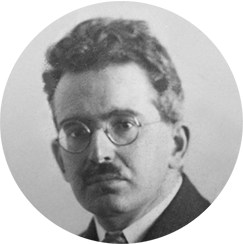Real Stories
Hello Deep Readers,
Welcome to the third of four weekly installments exploring Tommy Orange’s There There. If you’re just joining us, you can catch up on week one and week two. At this point, you should be about two-thirds of the way through the novel. Just know that you can read at your own pace and catch up with these installments at any time.
We aim to provide an opportunity for you to think deeply and engage with the novel in a variety of ways. We’ve been seeing great comments and discussions in the weekly Community Conversations on the website. Keep it going! And we have a number of salons coming up. Tonight, we kick things off with a salon on the writing craft of the novel. It’s not too late to register to join Micah Perks and Jennifer Tseng, who teach Creative Writing at UC Santa Cruz, talk about their approaches to the novel. Check out all of the 2021 Deep Read events listed below.
This week, we explore the concept of storytelling as it relates to the novel. We’re approaching storytelling in two ways: 1) storytelling as craft, or how the novel is structured as a narrative and work of art, and 2) storytelling as a theoretical practice, or how the novel depicts ethnography as a kind of politics.

Crafting Intimacy
We’ll start this exploration of storytelling by sharing some insights from Micah Perks, a writer and professor of Creative Writing at UC Santa Cruz. She’ll be part of tonight’s salon on craft and will be interviewing Tommy Orange on March 3 for our culminating, public event. It’s extraordinarily challenging to write about social justice in fiction without becoming didactic, partly because fiction writers ask questions rather than supply answers to problems. “We writers really struggle with balancing a political agenda with complicated characters,” says Perks. “In There There, it’s seamless.”
The sense of intimacy that Orange creates between the reader and the characters is a key way, for Perks, that Orange successfully navigates the personal, political, and plot-driven aspects of the novel. As Perks says, “there are 16 different voices that are braided throughout, and those voices are so intimately rendered.” Creating this intimacy between the reader and the characters is part of what makes Orange’s story compelling as well as what makes it work as a cohesive, multi-perspective narrative that integrates all of his different concerns.

Zeroing in on Opal, a character who particularly resonated with her, Perks highlights one technique that Orange uses to create intimacy—letting the reader in on secrets the characters hold from each other and sometimes even from themselves. One such secret that Opal keeps is the superstitious code she lives by; she has lucky and unlucky spoons, knocks on wood to keep unwanted thoughts and actions at bay, and believes even numbers are better than odd ones. About her code, the narrator writes: “she lives by a superstition she would never admit to. It’s a secret she holds so tight to her chest she never notices it. She lives by it, like breathing.”
To other characters in the story, Opal is a “big old lady,” who works all the time. But when we meet her as a young child on Alcatraz, she’s vulnerable and in pain. “As readers we get insight into her vulnerability and all the painful difficulties she’s pushed through that she doesn’t share with her grandchildren,” says Perks. “So her grandsons don’t have any idea what’s going on inside of her, but we do. That creates a sense of intimacy with the reader. We have secrets we share with her. We love secrets.”
Go Deep: Perks demonstrates some techniques Orange uses to create a sense of intimacy with the characters. With Opal, it’s the sense that we as readers know intimate details about her that others don’t know, details that she even keeps from herself. What are other moments of intimacy that Orange creates throughout the novel? What are some secrets shared between the reader and specific characters, but not others? Have you connected with a particular character? What is it that brought you closer to one character over another? Have you noticed other techniques of craft that make There There an interesting and engaging reading experience?

The Politics of Storytelling
Mayanthi Fernando writes and teaches Anthropology at UC Santa Cruz and sees storytelling as central to the politics of There There. She also sees parallels to the ethnographic work she’s done studying the political marginalization of Muslims in France. While Fernando is critical of the problems of ethnography—usually an outsider’s study of a culture—and the problematic history of anthropology with regard to Native communities, she welcomes the transformative power of storytelling at the heart of ethnographic practice: “What I really appreciated about fieldwork was listening to the stories that my interlocutors were telling me. Their stories changed the way that I thought about French politics and society, about politics and citizenship more broadly. And their stories thoroughly informed my critique of French secularism.”
This understanding of storytelling as a catalyst for shifts in political perspective and, therefore, a mode of political transformation is present in There There, too. We can see how political concerns inform Dene’s approach to his storytelling project, which he has inherited from his Uncle Lucas. When describing his project to the grant committee he’s applied to for funding, he explains his rationale for its “confessional style”:
What I want to do is to document Indian stories in Oakland. I want to put a camera in front of them, video, audio, I’ll transcribe it while they talk if they want, let them write, every kind of story I can collect, let them tell their stories with no one else there, with no direction or manipulation or agenda … there are so many stories here. I know this means a lot of editing, a lot of watching, and a lot of listening, but that’s just what our community needs considering how long it’s been ignored, has remained invisible.
Storytelling is fundamental to Dene’s political goal to make the Urban Native experience visible not just to the non-Native world but to the Native people of Oakland, to build community and to help them “feel less alone” and “live a better life,” as he’ll say later in the novel.
Dene’s project, in many ways, is a microcosm of the larger novel. As Fernando explains, “the book is a collection of stories that come together, a collection of lives that criss-cross one another; each chapter is almost a mini-ethnography, deeply attentive to person and place, and together they weave a larger story of Native life under settler colonialism”

The novel’s theoretical and political interest in storytelling reminds Fernando of German philosopher and critic Walter Benjamin’s (pictured to the right) essay, “The Storyteller” (1936). “Benjamin writes in his essay that storytelling is a disappearing yet vital art form, one that imparts not information but wisdom drawn from the exchange of experience,” she says. “And he makes a distinction between storytelling and the modern novel, which is about isolated, modern subjects and their internal life.”
This “isolation” of the modern novel is in contrast to how Dene reflects on his storytelling project at the powwow near the end of the novel:
He’ll ask everyone who comes into his booth why they’ve come to the powwow, what powwows mean to them. Where do they live? What does being Indian mean to them? He doesn’t need more stories for his project. He doesn’t even need to show a product at the end of the year for the grant money he’s received. This is about the powwow, the committee. It’s about documentation. For posterity.
As with Benjamin’s storyteller, Orange is interested in the collective amalgamation of stories—what Benjamin calls the storyteller’s “raw material of experience” that creates a “web which all stories together form in the end.”
The way There There, as a work of fiction, uses the art of storytelling as a political form speaks to the unique possibilities of fiction to deepen our understanding of experience and expand our thinking. “For me, that’s what Tommy Orange’s book is,” says Fernando, “it’s fiction, and yet, it’s real.” “Real life,” writes Benjamin, “this is the stuff that stories are made of.”
Go Deep: As other Deep Readers have suggested, do you agree that Dene’s character is a microcosm of the wider novel, perhaps even a stand-in for Orange himself? Do you see storytelling in the novel as a political act? What are other cultural examples in which storytelling is political? Why do you think the open-ended nature of stories and novels can be conducive to furthering political change and ideas? How does the intimacy Perks highlights connect to the transformative power of storytelling Fernando focuses on?
Join the community conversation: We encourage you to think through these questions as you read and share your thoughts in the comments below 👇
Community Conversation
Share your thoughts, reactions, and ideas with the Deep Read Community. Please note, comments are moderated and won’t populate immediately. Send any questions to deepread@ucsc.edu.
